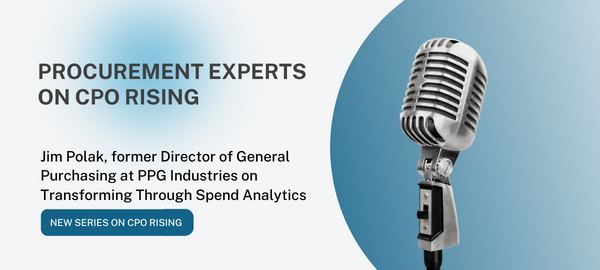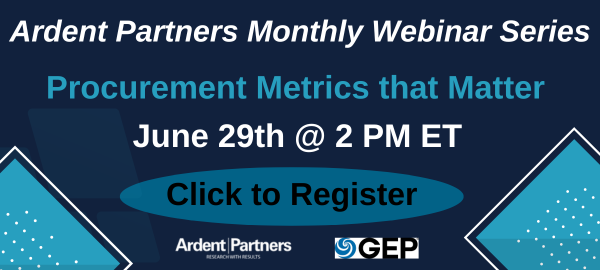Today, we look back at a “Procurement Experts on CPO Rising” series excerpt from an episode of the Procurement Rising Podcast featuring Jim Polak, former Director of General Purchasing at PPG Industries (click to listen to the full interview). Note that this excerpt has been edited for readability.
Learn how Polak established a process for spend analysis and commodity management at PPG.
Andrew Bartolini: When you came into the procurement role, you encountered a fair amount of pushback, especially around the area of spend analysis. It was during this time that you were beginning to transform the organization. Faced with fairly significant objections from powerful corporate stakeholders, what strategies did you use? And how did you engage that group to ultimately win them over?

Jim Polak: It really wasn’t easy to begin with. Several of our businesses were against giving procurement the money that I felt we needed to start doing things like spend analysis, auctions, and the like. But as I began to meet with them, one thing that kept coming back was the idea of buying a book. When you want to buy a book, you go on Amazon, click the book you want, then settle, and within a matter of days receive your book. But I asked, what if you need something within PPG? First, you have to figure out what regional center you need to go to. Next, you need to find where the purchase order form is and fill it out. Followed by routing it to purchasing and a purchasing agent, who then takes it and contacts the supplier to possibly get a price. And then maybe in a couple of weeks, you’ll get your item.
To me, it was lunacy that we’re doing this across the country. I could see the savings we could attain if we just simplified the whole thing rather than having people across the country buying the same thing in different ways. This was low-hanging fruit. Although to get this low-hanging fruit, we had to convince certain people that the opportunities were there. For me, the next step was to figure out where the spend is and start changing how we buy these things. By doing so, I explained how surprised they would be at the savings that were achievable. I’ll admit, the businesses themselves were skeptical. They didn’t view us as a function that mattered. Just go do your thing. It took many meetings with them and marketing and sales of what we were trying to do to convince them to at least give us a chance to change.
AB: What we’ve seen over the ensuing 20-plus years that really started to shift about five years ago is the dichotomy between how people searched, bought, and paid for things at home was dramatically different when they came to work. That stark different finally set in. And you have a new wave of employees coming in who are much more accepting of new technologies and viewing technology as a key piece of being able to do their jobs. But that wasn’t the case back then. I know from my own experience within sourcing and procurement teams that were going to be the beneficiaries of the automation, there was hesitancy and fear of change and displacement.
How did you communicate and collaborate with your internal team as you’re going through this very broad shift in the way things were being done?
JP: It took a while to be honest because they were used to somebody coming into my role every three to five years. A few thought they’d just wait me out. What it came down to was first going out to each of the regions and explaining that we’re going to change, here’s how we’re going to change, and here’s what your role is going to be as a part of that. I had to create a vision of where they were headed, and how they would change from being a purchasing agent to a commodity buyer. This also applied to our admins and how they would change from simply processing paper to becoming commodity team members and, in some cases down the road, commodity team leaders. As you met with your own internal people and began to change their titles and what they were responsible for, it was about getting them involved in the process of analyzing spend. It made a huge difference once they were part of those original commodity teams and saw the success they were having.
The goals we set up for the initial teams were 10% savings in 90 days. Every team formed in those early days said no way was that possible to achieve in 90 days. Their expectations were 2% in 90 days. And I would say, no, it’s 10%, 90 days — and they achieved that.
There were other things in those early days as we were analyzing spend and trying to classify our spend and aggregate it. We had visibility into all the spend. And people were thinking the data had to be perfect. I kept saying, no, make it as good as you can. Then on this date, you’re going to send it out to our suppliers and we’re going to hold events. Throughout the first of those events, suppliers would come back to us and say, PPG, your data is really bad and how can we improve it? So, we would use the suppliers that were bidding on commodities in those early days to help us analyze our spend and correct how we were classifying it. Starting out, you don’t have to have perfect data and not everything has to be set from day one. Just take the show on the road. Because at the end of the day, it’s the savings that’s convincing the businesses to support you. It’s not how many events you hold or how perfect your data is — it’s generating savings.


